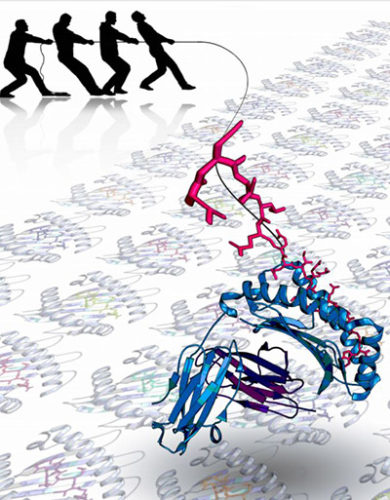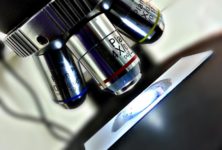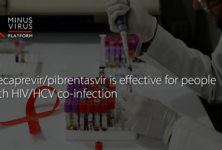Monash University and Cardiff University (UK) researchers have come a step further in understanding how the human immunodeficiency virus (HIV) evades the immune system.
 Declared a pandemic in 1987 by the World Health Organization, HIV infection has been responsible for 39 million deaths over the last 30 years. It remains one of the world’s most significant public health challenges and thus a greater understanding of how HIV functions is urgently needed so that researchers can design better therapies to target this devastating pathogen.
Declared a pandemic in 1987 by the World Health Organization, HIV infection has been responsible for 39 million deaths over the last 30 years. It remains one of the world’s most significant public health challenges and thus a greater understanding of how HIV functions is urgently needed so that researchers can design better therapies to target this devastating pathogen.
Published today (February 21) in Nature Structural and Molecular Biology, the Monash-Cardiff team have made an important finding in understanding how HIV-I can evade the immune system.
They demonstrated, in molecular detail, how mutations within HIV can lead to differing ways in which key immune molecules, termed the Major Histocompatibility Complex (MHC), display fragments of the virus and how this results in the HIV remaining “hidden” from the immune system.
Principal author of the study, Dr Julian Vivian, said the team was yet to develop a complete understanding of how HIV outmanoeuvred our immune system.
“This work uncovers a novel mechanism for HIV immune escape, which will be important to incorporate into future vaccine development and may have broader implications for immune recognition of MHC molecules,” he said.
The recent finding is part of a much larger international alliance between the two Universities, with the Systems Immunity Research Institute (SIURI) at Cardiff University and Monash Biomedicine Discovery Institute (BDI), having signed a Memorandum of Understanding.
The five-year mutual agreement recognises a number of highly productive joint projects already being conducted around inflammation and immunity, and provides a mechanism for enabling additional innovative projects and student exchange in the areas of protective immunity, metabolism, autoimmunity and cancer.
A chief Investigator on the ARC CoE for Advanced Molecular Imaging, based at Monash BDI, Professor Jamie Rossjohn, said the find was exciting and unexpected.
“These results were only possible because of the close collaborative ties between Monash and Cardiff researchers.”
Monash BDI Director, Professor John Carroll, said the research demonstrated the power of international collaboration.
“We are bringing together excellence in molecular and systems level immunity in this partnership, and I know it will lead to many more great discoveries.”
About the Monash Biomedicine Discovery Institute
Committed to making the discoveries that will relieve the future burden of disease, the newly established Monash Biomedicine Discovery Institute at Monash University brings together more than 120 internationally-renowned research teams. Our researchers are supported by world-class technology and infrastructure, and partner with industry, clinicians and researchers internationally to enhance lives through discovery.
About the Australian Research Council Centre of Excellence in Advanced Molecular Imaging
The $39 million ARC-funded Imaging CoE develops and uses innovative imaging technologies to visualise the molecular interactions that underpin the immune system. Featuring an internationally renowned team of lead scientists across five major Australian Universities and academic and commercial partners globally, the Centre uses a truly multi scale and programmatic approach to imaging to deliver maximum impact. The Imaging CoE is headquartered at Monash University with four collaborating organisations – La Trobe University, the University of Melbourne, University of New South Wales and the University of Queensland.


 ПОИСК ПО САЙТУ
ПОИСК ПО САЙТУ  поиск по ресурсному центру
поиск по ресурсному центру 



